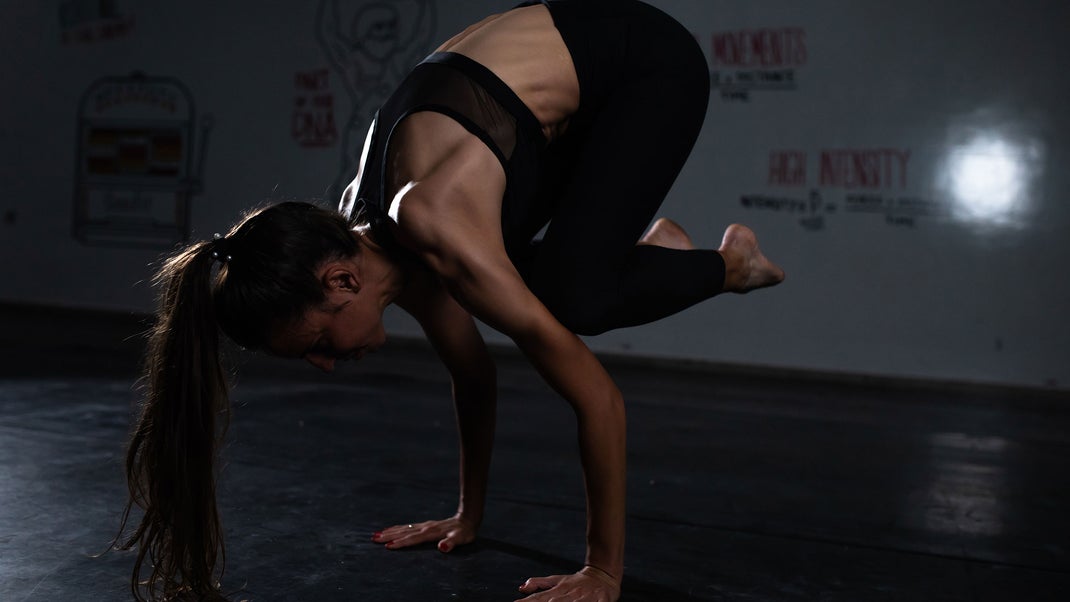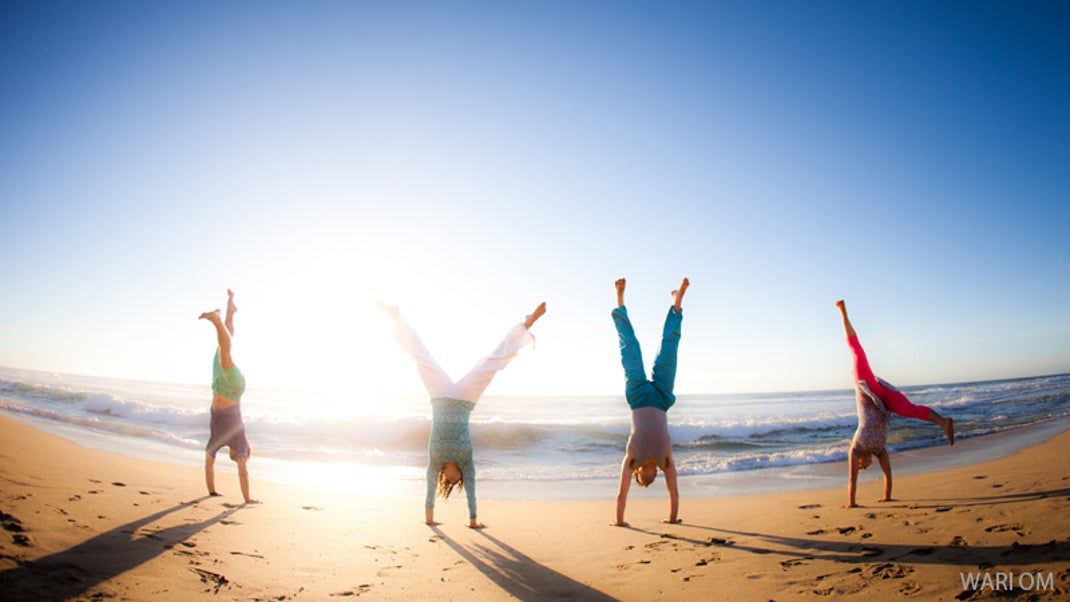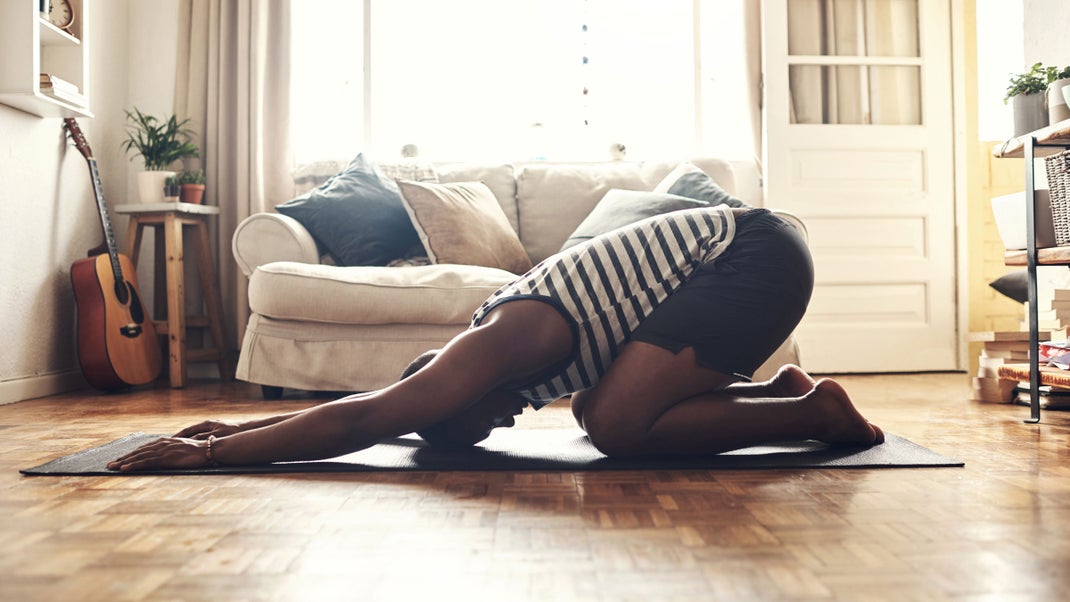When I was first introduced to yoga, I had no idea what the heck I was doing. The poses were so awkward and difficult! But after a few months of practice, my body felt more aligned and relaxed than it ever has before. Don’t let these tricky poses scare you because in this blog post we are going to talk about how they can help you become healthier!
For a practice that is known for being gentle and relaxing, some yoga asanas can be downright scary. Consider the fact that we are flipping ourselves upside down and balancing on one foot, one hand, even on the top of our head. Sometimes our yoga requires that we put ourselves in some pretty precarious positions. It’s no wonder some of us shy away from poses that require us to be in unfamiliar positions.
That doesn’t mean you should avoid some of yoga’s more challenging poses. Meeting the challenge of a complex pose can give you goosebumps—in a good way. Using props, the wall and other hacks can help you feel safer and more secure. With the added confidence, you’ll conquer these powerful poses.
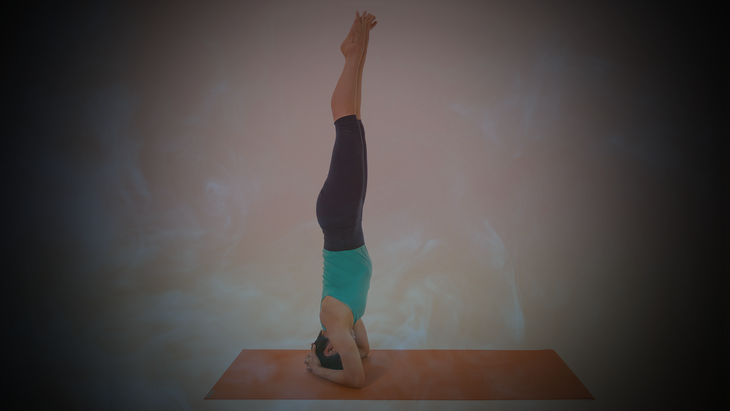
Salamba Sirsasana (Supported Headstand) in a doorway
Headstand requires strong shoulders, arms, and abs. You have to hold your body weight up with your arms. Putting weight on your head can cause neck injury. You have to maintain your equilibrium to keep from falling and hurting yourself. For that reason, many people practice near a wall. Even better, try it in a doorway.
Kneel in a doorway with your head facing one side of the door jamb and your feet at the other. Place your hands on opposite sides of the door jamb and angle your elbows outward to make a triangular base. Lower your head so that the back of your skull grazes the doorway, but don’t put weight on your head. Press your arms away from the floor.
Tuck your toes and lift your hips as if coming into Adho Mukha Svanasana (Downward-Facing Dog). Walk the feet up the doorway one foot over the other. Continue to push up through the arms, activate the abdominals, and allow the spine to align with the doorway.
When you’ve walked about halfway, lift one leg up overhead and allow the sole of the foot to find the doorjamb. Stabilize and continue to press up. Then bring the other foot up into the headstand. Lengthen the spine, activate the abs, and press up through the arms and shoulders. When you are ready to come down, lower one leg to the door jamb on the opposite side, and walk down. Come to rest in Balasana (Child’s pose).
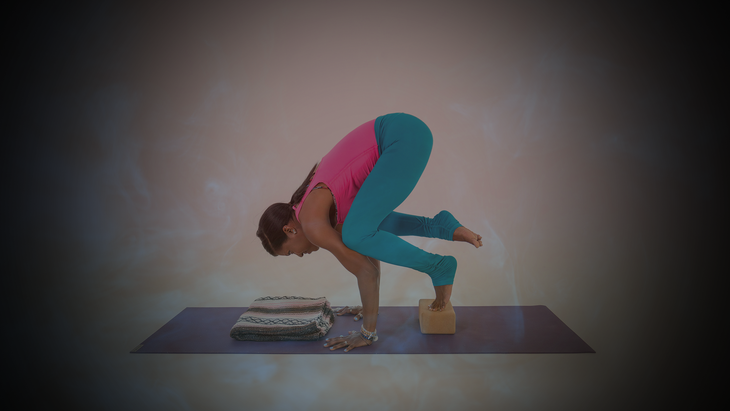
Bakasana (Crow Pose) with blankets and blocks
One of the common fears in practicing Crow is pitching forward and landing on your face. Dianne Bondy offers solutions using blocks in two different ways to help ease your trepidation.
Standing on a block as you enter the pose can help you gain a sense of equilibrium before you begin to lift into the pose. Start standing on a firm block, then lower into a squat and place your hands on the floor in front of you. With your feet on the block, you’ll be able to nestle your knees closer to your armpits. Shift forward to balance on your hands and, when you feel strong and balanced, play with lifting one foot, then the other.
Alternately, you can use a block under your head. Enter the pose from a squatting position and, as you shift your body forward, allow the forehead to rest on a block placed in front of your mat. Bondy says it’s important to keep your neck straight and strong.
In this pose—and any pose, frankly—surrounding yourself with pillows, bolsters, and cushions may also make you feel safer.
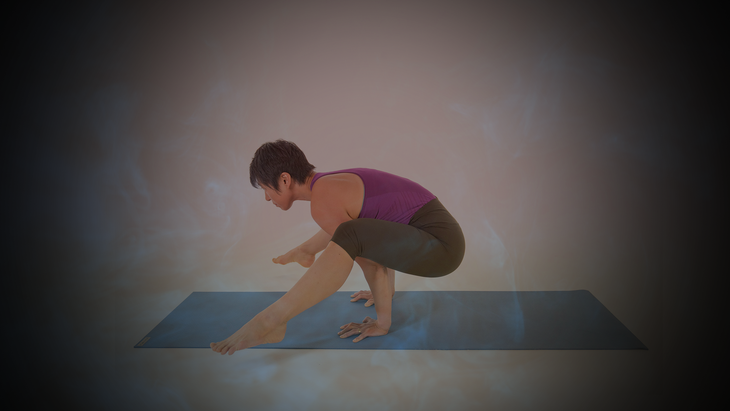
Tittibhasana (Firefly)
Firefly is another pose that requires you to hold your weight up with the strength of your arms and find a balance so that you don’t tumble forward or back. For more stability in the pose, follow the instructions for Firefly, but when you come into the pose, keep your knees slightly bent so that your feet are closer to the floor rather than reaching skyward. This may give you a greater sense of balance, and you’ll also be able to catch yourself if you begin to come out of the pose.
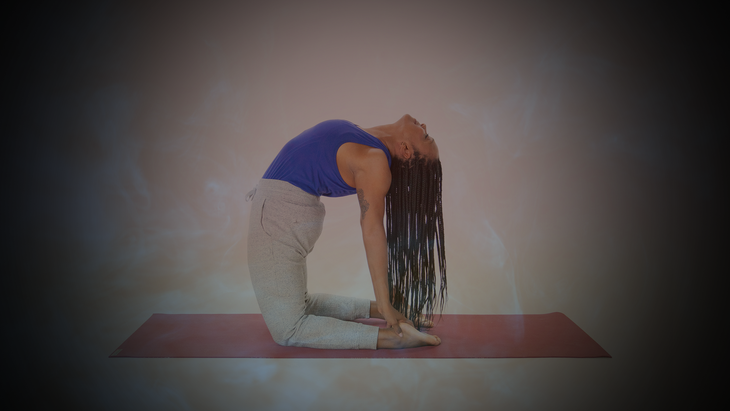
Ustrasana (Camel Pose)
I notice students being tentative in Camel and other backbends because they’re afraid of falling backward. You can counter that feeling by pressing your thighs forward as you begin to arch back into the pose. Keep your tailbone down and the buttocks relaxed to avoid crunching your lumbar spine. Likewise, keep some length in the back of the neck as you arch your back and lift your chest up.
This is another pose where a wall can be your friend. You can begin the pose kneeling with your toes tucked and your feet against the wall. Arch back until your head gently touches the wall behind you. Or face the wall and press your thighs against the wall as you lift the torso and peel back. Placing blocks on their tallest setting outside each ankle gives you a landing place for your hands and you reach back.
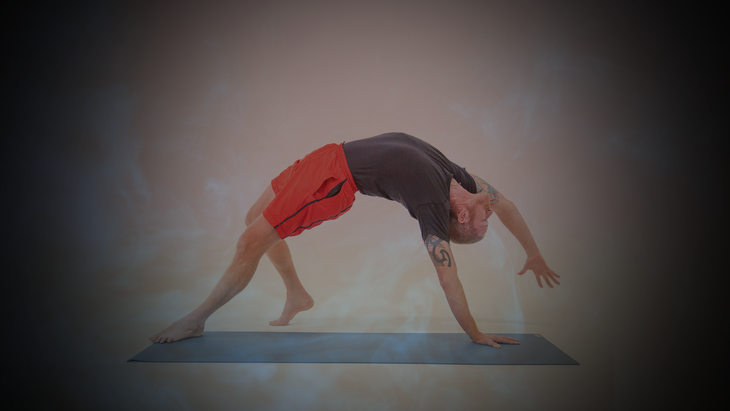
Camatkarasana (Wild Thing)
The pose we call Wild Thing or Flipped Dog can feel pretty precarious. You’re backward and upside down and on one arm; everything about it is counter to how we normally hold out bodies. Some people question whether it’s safe at all. Most agree that it is a pose that is best done by experienced yogis with careful attention to their anatomy. But people who do it find it exhilarating.
This is a pose you may want to build up to overtime. Strengthen your shoulders and stretch the hamstrings in the downward Facing Dog. Then practice Three-legged Dog, reaching up with the lifted leg high to stretch the quadriceps and the front of the body. Next try Three-legged Dog bending the lifted leg and moving the foot across to the opposite side of the body.
Practicing Pursvottanasana (Reverse Plank), Urdhva Dhanurasana (Upward Bow / Wheel Pose), and other backbends will also help prepare your body and give you unimpeachable strength and mobility in your shoulders. When you’re ready to lift up and over into Camatkarasana, you’ll be able to do it with confidence.
Conclusion:
Don’t Let These Tricky Poses Scare You
By Don’t Let These Tricky Poses Scare You Don’t let this trick poses intimidate you. Start with some easier variations, like the modified Firefly pose and Camel Pose, to get your bearings before trying more advanced backbends like Wild Thing (Camatkarasana).
When in doubt, work on strengthening other yoga poses first or practice them with a friend. Don’t forget that using props can make even simple poses safer and less intimidating too!

